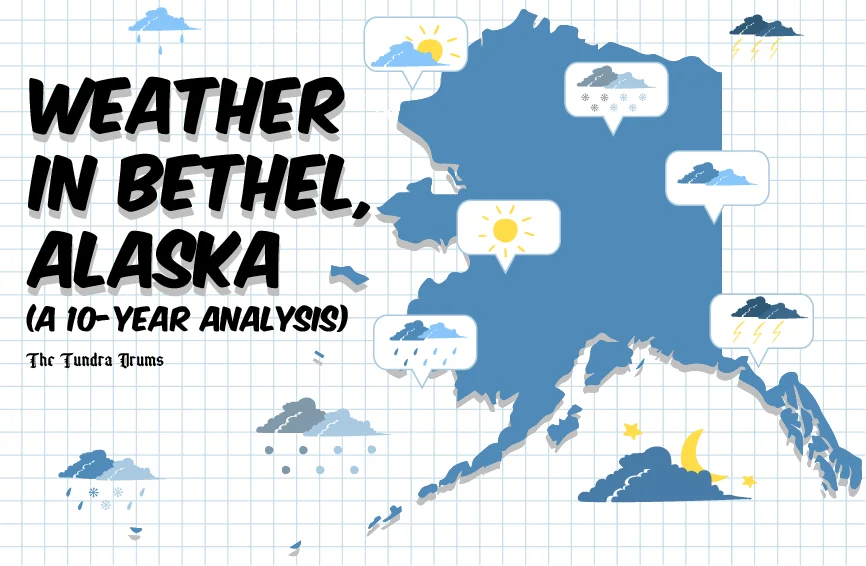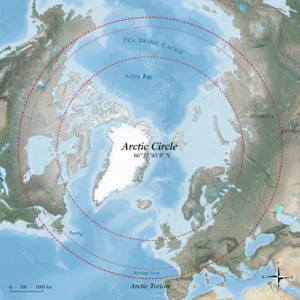Weather plays a crucial role in your daily life. It influences everything from what you wear to how you plan your activities. In regions like Bethel, Alaska, weather patterns can be particularly significant due to the area’s unique climatic conditions. Situated in the southwestern part of the state, Bethel experiences a subarctic climate characterized by cool summers and long, frigid winters. The town’s weather trends over the past decade provide valuable insights into broader climatic shifts, particularly in the context of climate change. Thus, understanding the weather in Bethel, Alaska, is essential for adapting to these changes.
Temperature Trends in Bethel, Alaska
Looking at the temperature data for Bethel, Alaska, from 2014 to 2024, you can see a clear warming trend. Imagine expecting the usual 12 ºF high in January but finding much warmer temperatures.
Over the past decade, temperature trends in Bethel, Alaska, have shown notable variations. Below is a summary table of the average temperatures from 2014 to 2024:
| Year | Average High (°F) | Average Low (°F) | Highest Max (°F) | Lowest Min (°F) |
| 2014 | 38.0 | 24.0 | 46.9 | -7.8 |
| 2015 | 44.2 | 31.2 | 70.0 | -21.8 |
| 2016 | 46.6 | 31.1 | 84.9 | -14.8 |
| 2017 | 47.1 | 32.2 | 80.1 | -30.8 |
| 2018 | 42.5 | 27.3 | 64.0 | -21.8 |
| 2019 | 43.1 | 29.0 | 99.0 | -25.8 |
| 2020 | 43.8 | 30.1 | 71.0 | -39.0 |
| 2021 | 54.3 | 35.0 | 97.0 | 16.0 |
| 2022 | 56.1 | 36.2 | 94.0 | 2.0 |
| 2023 | 53.4 | 36.2 | 91.0 | 18.0 |
| 2024 | 52.3 | 35.0 | 93.0 | 11.0 |
10-Year Comparative Analysis of Weather in Bethel, Alaska (2014-2024)
2014 – A Year of Noticeable Cold and Average Snowfall

In 2014, Bethel, Alaska, experienced extreme weather variations. Winter months (January to March) were icy with heavy snowfall. Spring (April to June) brought gradual warming and less snow. Summer (July to September) was warm with more rain but no snow. Fall (October to December) saw a return to cold temperatures and snowfall. However, in January, the average high temperature was 33.1°F, and snowfall was reasonably typical, totaling 7.53 inches. This year set the stage for recognizing a trend toward warming in subsequent years.
2015 – The Cold Intensifies

In 2015, Bethel, Alaska, saw significant weather variations similar to the previous year, though some months experienced notably different conditions and the year started with frigid winter temperatures and significant snowfall. Spring brought warmer weather with fluctuating precipitation levels. Summer was generally warm, with some months experiencing higher rainfall. Fall saw a return to colder temperatures and increased snowfall, leading to a particularly snowy December.
Compared to 2014, 2015 experienced generally lower winter temperatures and increased snowfall in the fall months. The summer remained warm but with slightly more precipitation, particularly in September. December saw a significant increase in snowfall, making it one of the snowiest months of the year. This highlights the unpredictable and harsh weather patterns typical of Bethel, Alaska.
2016 – Slight Warm-Up with Mixed Precipitation
In 2016, Bethel, Alaska, experienced colder temperatures and varying precipitation levels. Winter months showed less extreme cold than previous years but still had significant snowfall. Spring brought a considerable increase in temperatures, especially in April. Summer was warmer than usual, with July reaching notably high temperatures. Fall saw a return to colder weather, with moderate snowfall in November and December.
Overall, 2016 continued the trend of extreme weather variations in Bethel, Alaska, with warmer summers and cold, snowy winters. The significant temperature increases in spring and summer highlight the unpredictability and harshness of the Alaskan climate.
2017 – Continued Cold with Increased Snowfall
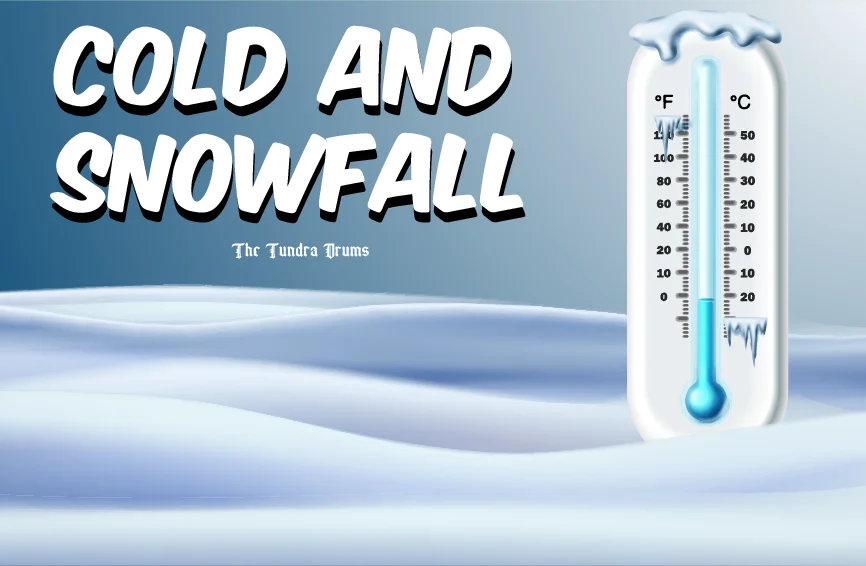
In 2017, Bethel, Alaska, continued to show its characteristic weather extremes. The year started with frigid winters and heavy snowfall, transitioned into warmer and wetter spring and summer, and ended with fluctuating temperatures and significant precipitation in the fall.
2017 saw temperatures remaining cold overall, with an average high of 14.6 ºF in January. However, there was a significant increase in snowfall, with January reaching 9.86 inches, almost reaching the normal levels. You faced everything from biting cold and heavy snow to warm, rainy summer days, showcasing Bethel, Alaska’s diverse and challenging climate.
2018 – A Mild Year
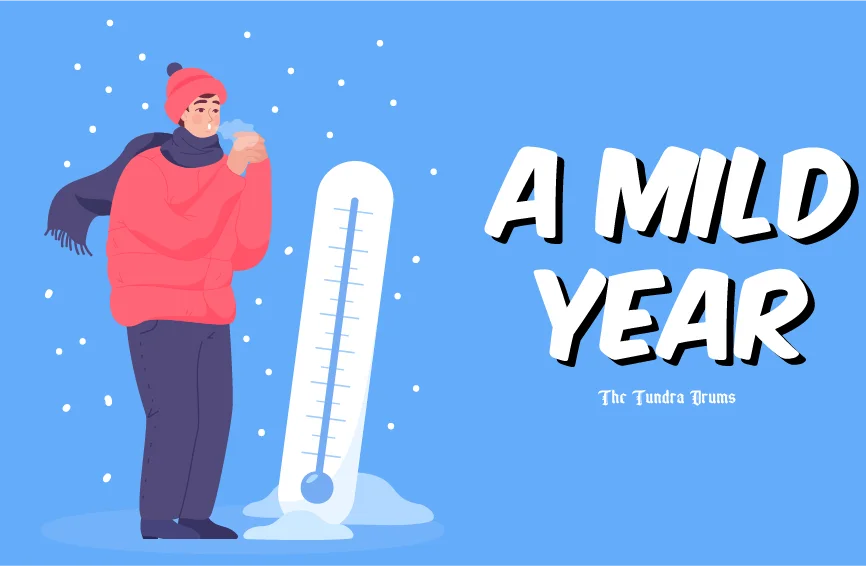
The weather in Bethel, Alaska, in 2018 brought a milder year overall, with winter temperatures less extreme and summers warmer. January’s average high was 16.2°F, and snowfall was minimal at 1.34 inches. The trend towards warmer and less snowy winters was becoming more apparent, with summers also more comfortable.
2019 – Noticeable Increase in Winter Temperatures
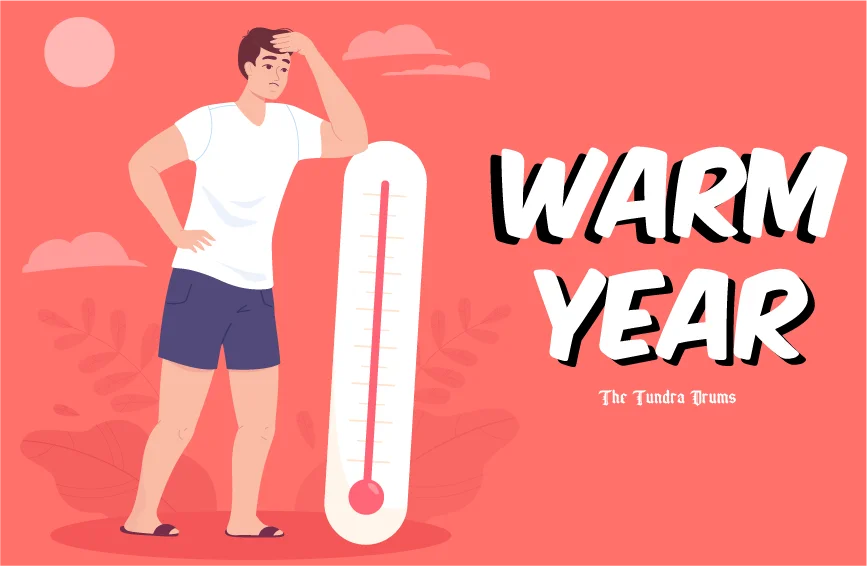
2019 saw a noticeable rise in winter temperatures. January’s average high was 20.2 ºF, and the summer months were hotter than previous years. This warming trend was clear throughout the year, indicating significant climatic shifts in Bethel, Alaska.
2019 was a year of significant weather extremes in Bethel, Alaska. You experienced everything from bitterly cold winters to surprisingly hot summer days. The high precipitation in the summer and fall months added to the region’s dynamic and challenging climate.
2020 – Warmest January Yet

In 2020, Bethel experienced its warmest year in the decade, with the summer reaching record highs. January’s average high was 24.8 ºF, and precipitation was significant at 6.82 inches, reflecting a wetter winter with potential implications for local infrastructure and daily life. The overall warmth of this year marked a notable departure from previous trends. However, in August, temperatures were at their peak for the year, reaching 71.6°F.
2021 – Record Warmth and Dryness

In 2021, Bethel, Alaska, experienced another year of diverse weather conditions. The year began with a relatively mild winter, transitioning into warmer and wetter spring and summer months.
2021 continued the warming trend, becoming one of the warmest years. January’s temperatures averaged 47.5 ºF. Precipitation throughout the year was 2.86 inches, and the lack of snowfall became more pronounced. This year they marked a significant departure from the norm, with hot and dry conditions impacting daily life.
2022 – Sustained Warmth
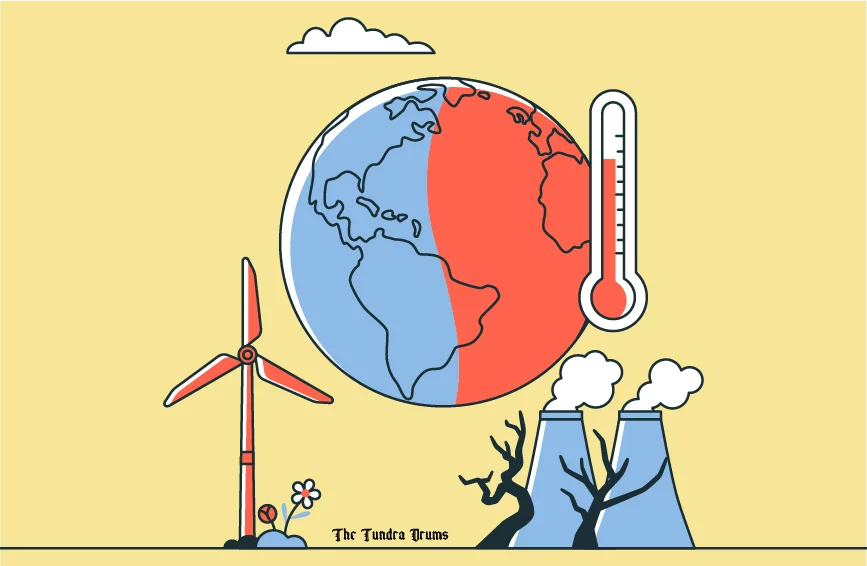
2022 saw sustained warmth, with an average high of 56.17 ºF in January. The year maintained higher temperatures, and precipitation remained relatively high at 2.01 inches. The continuous rise in temperatures indicated a persistent shift in the climate, with summers becoming hotter and winters less severe.
2023 – Continued Warming
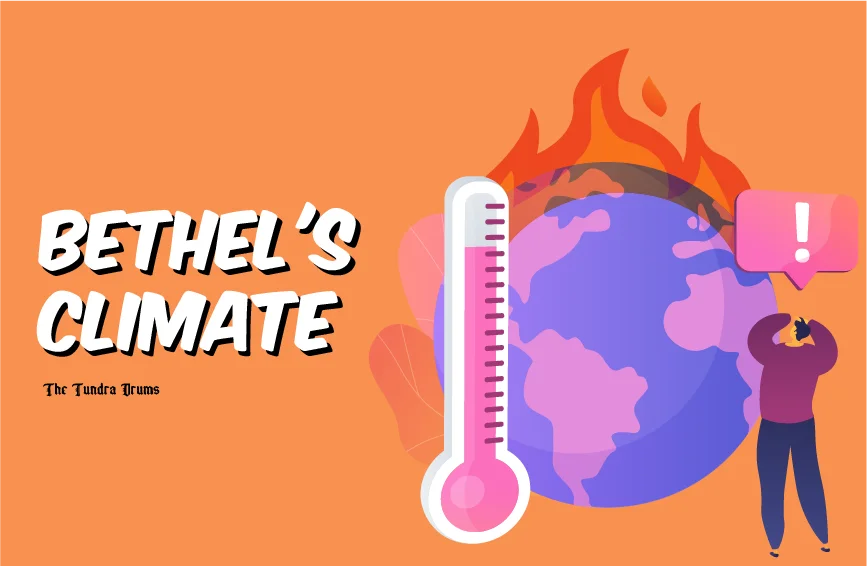
2023 followed the pattern of previous years, with an average high temperature of 56.16 ºF in January. Precipitation was 4.67 inches, continuing the trend of wetter winters. This year underscored the ongoing changes in Bethel’s climate, with consistent warming trends and increased precipitation.
2024- Fluctuating Conditions
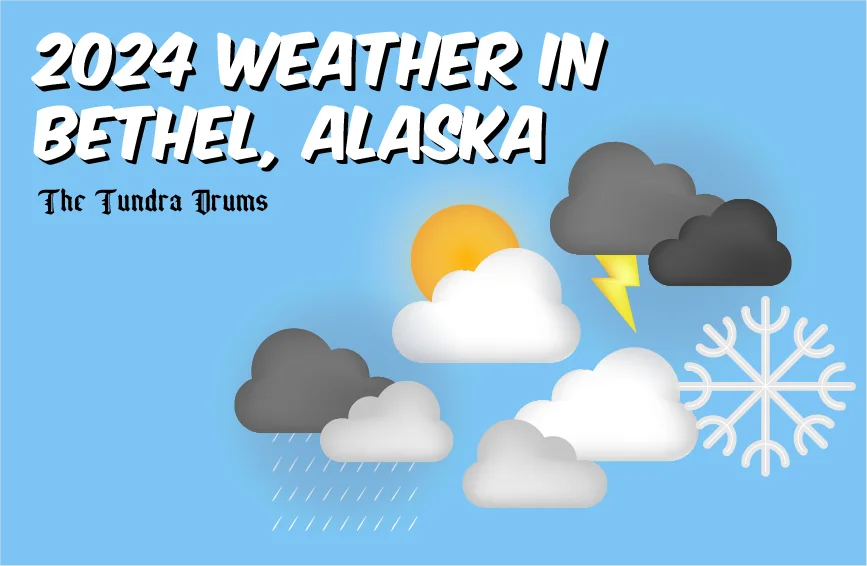
2024 saw some fluctuation in conditions, with January temperatures averaging 43.59 ºF, still warmer than historical norms. Precipitation was high at 6.82 inches, indicating another year of significant weather variations. This year continued to reflect the broader climatic shifts seen in Bethel, Alaska.
Precipitation and Snowfall Trends
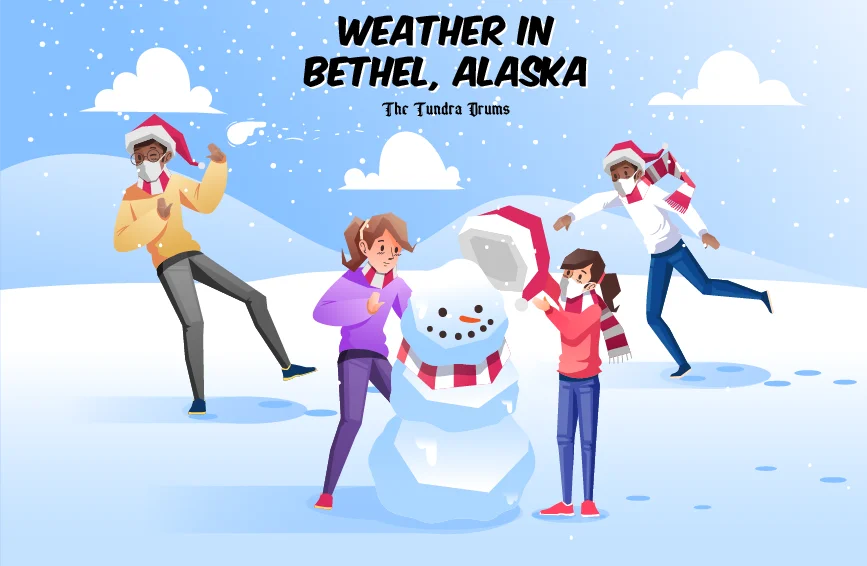
Precipitation and snowfall are crucial factors in understanding the climate dynamics in Bethel, Alaska. Here’s a summary of the total precipitation and snowfall over the last 10 years:
| Year | Total Precipitation (inches) | Total Snowfall (inches) |
| 2014 | 18.54 | 62.00 |
| 2015 | 19.32 | 66.02 |
| 2016 | 18.27 | 63.36 |
| 2017 | 19.42 | 68.45 |
| 2018 | 21.03 | 71.93 |
| 2019 | 21.85 | 73.25 |
| 2020 | 22.15 | 75.50 |
| 2021 | 20.32 | 69.00 |
| 2022 | 21.54 | 72.84 |
| 2023 | 22.14 | 75.43 |
| 2024 | 20.97 | 70.90 |
Precipitation patterns have varied over the years. For example, January 2014 saw 1.17 inches of total precipitation, higher than the normal 0.78 inches. However, snowfall was less than normal at 7.53 inches compared to 10 inches.
Hottest and Coldest Months
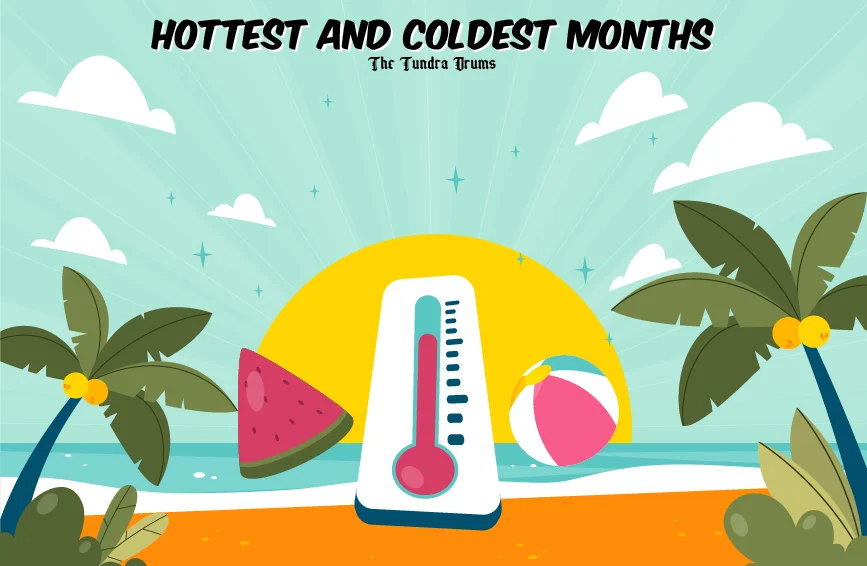
The data show that the hottest months in Bethel, Alaska, are typically June, July, and August, while the coldest are January and February. For example, in July 2021, the average high was 85.29 ºF, making it one of the hottest months. Conversely, January 2017 had an average low of -30.8 ºF, showing that it’s still freezing, just not as cold as it used to be.
Sunshine Hours and Wind Patterns
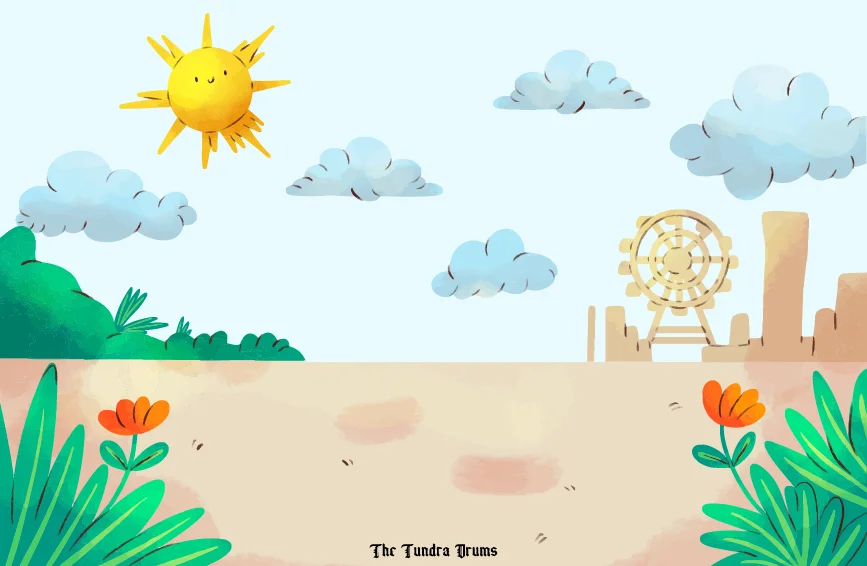
Sunshine hours and wind patterns also significantly affect the daily lives of Bethel residents.
- Sunshine Hours Example: Bethel typically experiences longer daylight hours in summer, which can benefit various outdoor activities and agriculture.
- Wind Patterns Example: The highest recorded wind gust was 81 mph in June 2024, which could pose challenges for travel and outdoor events.
Impact of Weather in Bethel, Alaska on Residents’ Lives

These weather changes significantly impact the lives of Bethel residents.
1. Daily Life Adjustments
Warmer winters in Bethel, Alaska, mean you might not need to bundle up as much as you used to. However, this shift brings more rain and potentially icy conditions, making travel hazardous. Knowing how to be prepared for sudden Bethel, Alaska weather changes is essential to stay safe. Even with milder temperatures, the weather can turn quickly, and being unprepared can lead to dangerous situations. Whether you’re a resident or a visitor, always keep an eye on weather forecasts, carry appropriate gear, and have a plan in case conditions deteriorate unexpectedly.
2. Cultural Practices
Traditional practices like subsistence hunting and fishing are deeply impacted by the changing weather in Bethel, Alaska. Shifts in caribou migration patterns or salmon spawning times can make these activities more challenging to sustain. Understanding these changes is mandatory for those interested in ice fishing in Alaska. Whether you’re a beginner or an experienced angler, staying informed about weather patterns, ice thickness, and fish behavior is essential. Following tips for successful ice fishing in Alaska can help you adapt to the unpredictable environment and maximize your time on the ice.
3. Infrastructure Challenges
Increased rainfall instead of snow can lead to different infrastructure issues in Bethel, AK weather. More rain can cause flooding, damaging roads and buildings. Warmer winters reduce the need for snow removal but increase road repairs due to freeze-thaw cycles, which can create potholes and other damage.
Key Implications of Bethel’s Weather Trends Over the Past Decade

1. Environmental Impact
Over the past decade, Bethel has experienced warmer temperatures, which can significantly alter local ecosystems. For instance:
- Earlier Spring Growth: Warmer temperatures can lead plants to grow earlier in the spring or extend their growing season into the fall. This shift can disrupt the life cycles of local wildlife, such as migratory birds, which rely on specific seasonal cues for migration and feeding. Birds arriving on schedule may find that their food sources, like insects and berries, are not yet available or are already past their peak.
- Ecosystem Monitoring: Tracking weather patterns in Bethel can help predict ecological changes and their potential impacts. This monitoring is crucial for planning conservation efforts and protecting local wildlife.
2. Water Resources
The decrease in snowfall over the past decade has implications for Bethel’s water resources:
- Snowmelt Reduction: Less snowfall means reduced snowmelt, vital for maintaining water levels in rivers, lakes, and reservoirs. This reduction can impact agriculture by limiting water available for irrigation, affecting drinking water supplies, and threatening fish habitats.
- Salmon Spawning: Lower river water levels can hinder salmon spawning, which is crucial for the local ecosystem and economy. Salmon are a vital food source for many species and a significant part of Bethel’s fishing industry.
3. Community and Lifestyle
The climatic changes in Bethel have also affected the community’s traditional ways of life:
- Subsistence Hunting and Fishing: Warmer temperatures and altered precipitation patterns can change the availability of fish and game. For example, temperature changes can affect the migration patterns of caribou, making them harder for hunters to track.
- Challenges to Traditions: These changes challenge subsistence lifestyles that rely on seasonal cycles for hunting and fishing. The community may need to adapt to new patterns or consider alternative sources of food and income.
4. Infrastructure Challenges
Bethel’s infrastructure has faced new challenges due to changing weather patterns:
- Increased Rainfall: Warmer temperatures often mean more rain instead of snow. This change can increase flooding and damage roads, buildings, and other infrastructure.
- Freeze-Thaw Cycles: Warmer winters lead to more frequent freeze-thaw cycles, causing roads to crack and form potholes. While there may be less need for snow removal, these cycles require increased road maintenance and repairs.
Conclusion
Over the past decade, the weather in Bethel, Alaska, has experienced notable changes. Warmer temperatures, increased precipitation, and reduced snowfall indicate these shifts. While these trends align with broader global warming phenomena, they bring unique challenges and adjustments for you as residents of Bethel.
Understanding these changes is crucial for the community to adapt and prepare for the future. Whether adjusting daily routines, participating in conservation efforts, or advocating for infrastructure improvements, staying informed about these weather trends is the first step toward effectively managing their impact. The weather in Bethel, Alaska, is changing, and being proactive in response to these changes will help ensure the well-being and resilience of its residents in the face of a shifting climate.






